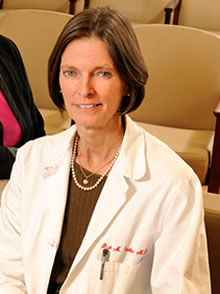
In a National Academy of Medicine commentary published this week, Emory University co-author Ruth M. Parker, MD, highlights the need to use art as a resource to help improve health literacy.
"Art is intimately coupled with communities and their artists. It has a unique ability to communicate timeless messages, visually representing how our values and traditions affect health across time and cultures," says Parker, a professor of medicine (pediatrics) at Emory University School of Medicine.
A longtime health literacy expert, Parker currently serves as consultant and advisor to numerous federal agencies, professional societies and members of industry on their initiatives related to health literacy.
Parker's co-author on the commentary, John David Ike, MD, an internal medicine resident at Duke University Hospital and Emory University School of Medicine graduate.
According to the authors, health literacy is content and context specific. The vast majority of research in health literacy has concentrated on health-literate content and processes focusing on the written and spoken word and how it is accessed, understood, and used. The arts are an underexplored source of understanding and communicating context - how values traditions, and beliefs affect content.
"Our efforts in health literacy should reflect our attitude of respect for values, traditions and beliefs. Indeed, for those seeking to advance health literacy as foundational for health and health care, content and context matter," the authors write.
"Perhaps the arts are an untapped resource that could allow our efforts to be both more effective and collective. They speak to the resilience and perseverance of ideals and standards we often neglect."
The commentary offers two illustrative examples of art and health literacy, including paintings in a 12th century Italian hospital and a modern-day sculpture in a Louisville, KY art exhibit that, according to the authors, provides a forum for community members to gather and discuss the negative effects of trauma and poverty within their community.
Over the last two decades, Parker has focused extensively on healthcare issues of underserved populations, particularly health literacy. She helped create a widely-used measurement tool to quantify patients' ability to read and understand health information (TOFHLA, the test of functional health literacy in adults).
She has authored numerous papers on health literacy, and co-edited the complete bibliography of medicine on health literacy for the National Library of Medicine. She co-authored the most widely used definition of health literacy, which was used in Healthy People 2010 and is currently used by the National Academy of Medicine and by the National Institutes of Health.
Prior to attending medical school, Ike earned a Bachelor of Arts in Art History at Davidson College, where Parker is also an alumnus.
To read the full commentary, please click here.
